If you have a car that has rust on it, then you understand just how unbearable the patch is to look at. Ever wondered what exactly brings about that rust? In this post, we’ve done some extensive research to help you understand what car rust is, what causes it, and what you can do to fix it.
Rusting in cars often arises when the metallic material (mostly steel) comes into contact with salt, water, or oxygen. These three elements gradually oxidize the car’s metal, thereby resulting in an unsightly reddish brownish appearance.
If you don’t take care of it soon enough, rust can significantly impact your car’s structural integrity, not to mention its resale value. For that reason, we’ve put together this informational post to enlighten you on everything about car rust, and what you can do to prevent or remedy any rust-related issues.
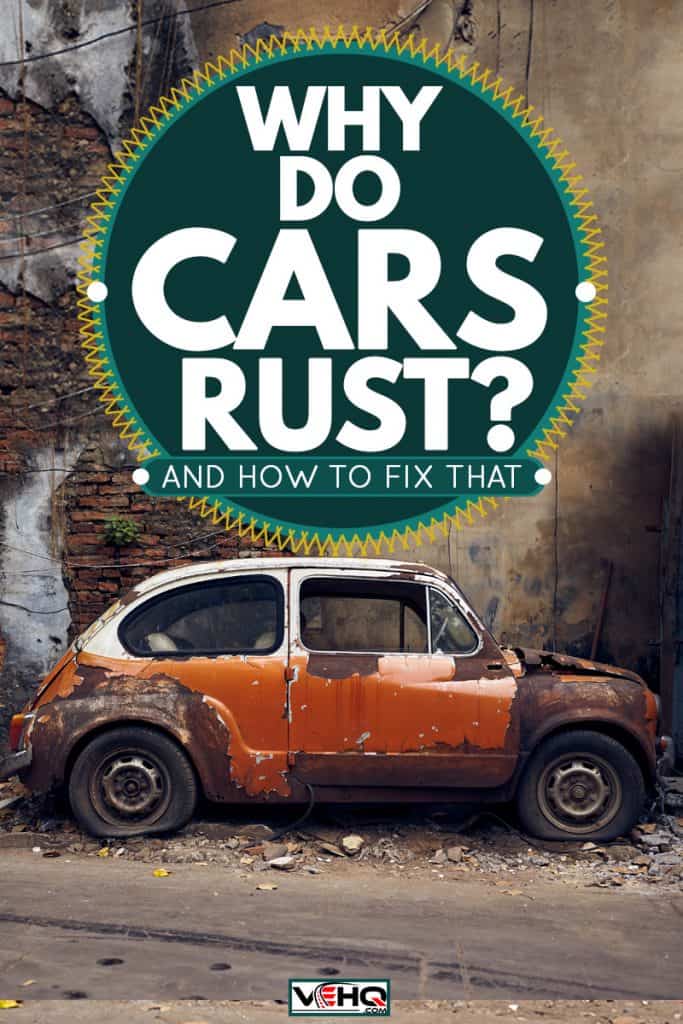
[toc]
What Is Rust And How Does It Form On Cars?
Rust is a reddish/yellowish brown iron oxide coating that forms on the surface of steel through a chemical reaction known as oxidation. Steel is oxidized, or broken down by salt, water or oxygen. The following are common ways in which each element gets into your car to form rust:
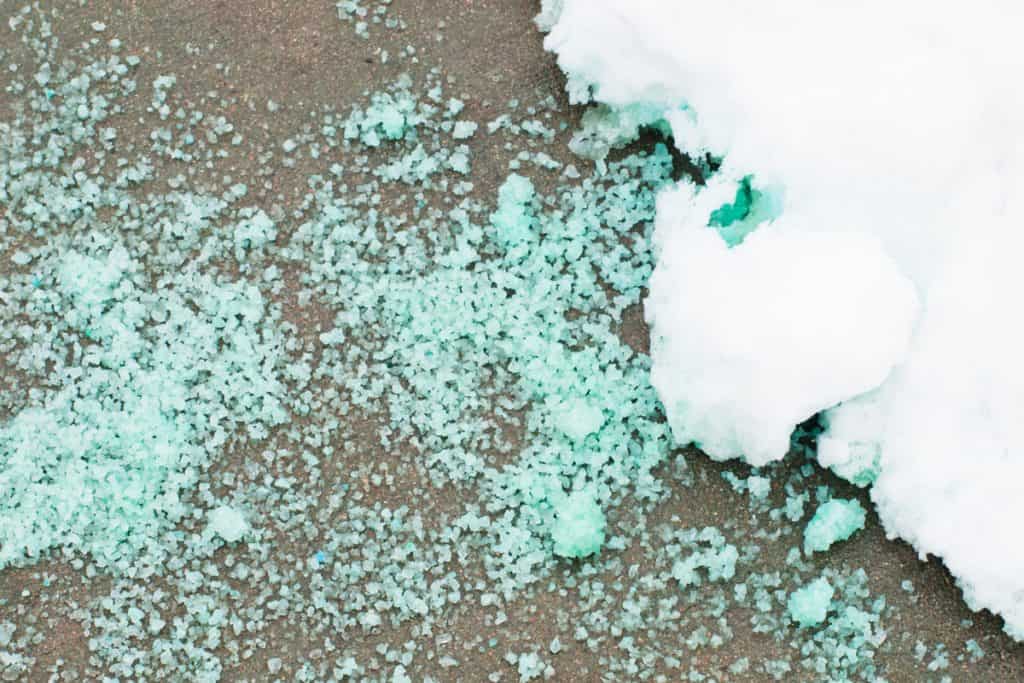 Salt
Salt
Once your car’s metallic surface comes into contact with salt, the iron component reacts strongly with oxygen to produce iron oxide (rust, in layman’s terms). The salt gets absorbed quicker in hotter climates since the pores in your car get expanded by the hot sun.
Washing your car often is the most effective way of clearing the pores and preventing oxidation. If you’re wondering how often to carry out your car cleaning, read, "How Often Should You Wash Your Car?" for more helpful information.
Oxygen
Each time you drive, small particles or stones fly from beneath the car and chip the paint from the area around the wheels. This opens the door for water and air penetration into the underlying metal. If possible, steer clear from rough terrain and drive on the tarmac instead.
If you mostly drive on the highway where there’s plenty of road debris, fit your car with a plastic hood deflector. Deflectors do a great job of saving the hood from getting scratches from pebbles or other sharp particles.
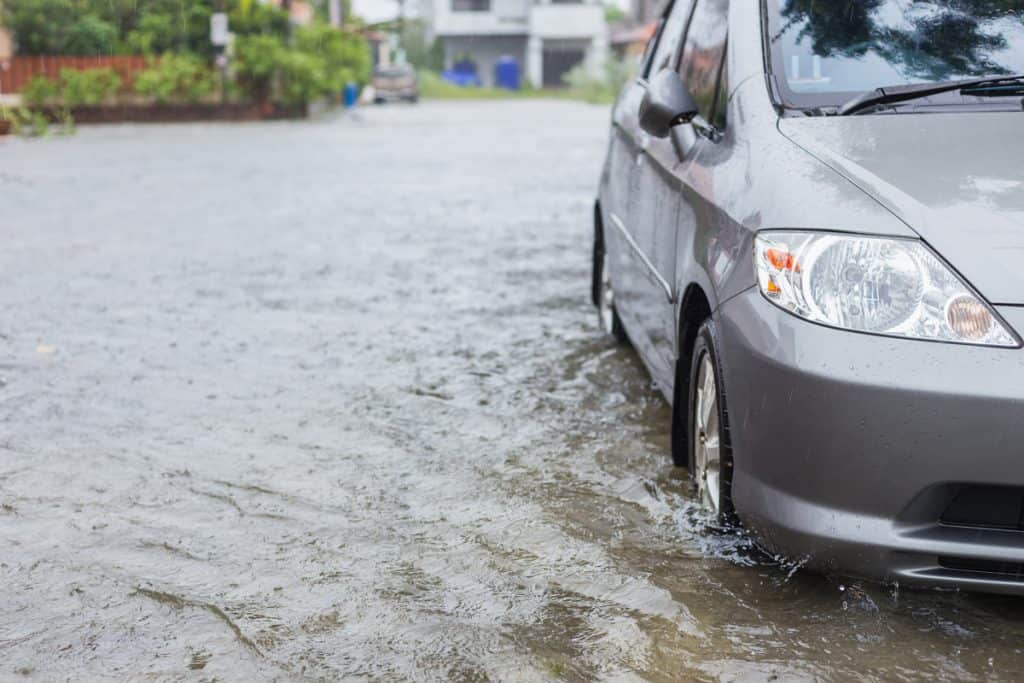 Water
Water
Areas in your car with a leaky seal can result in corrosion and seepage. Such areas include the window seals, trunk, and headlights. The top parts of the vehicle that receive rain are probably the ones with the highest chance of rusting. Unpainted surfaces on the car (even the tiniest ones) combine with water from the rain to form rust.
Luckily, most of today's manufacturers use galvanized steel, which is basically an improved version of ordinary steel. This is not to say that modern cars aren’t immune from rust; they are, but it impacts them at a significantly slower rate. More of this in the next point.
Why Do New Cars Not Rust Anymore?
Rust is a common problem, especially for older car models. Ford trucks, Toyotas, and VW's are notorious for this. However, the past 25 years have seen a revolution in the auto industry that has lowered the chances of corrosion in vehicles.
Among the many changes made in modern cars include upgraded body metals. The use of regular steel has gradually been scraped by using galvanized steel, which is coated using rust-resistant zinc on both sides.
On top of that, there’s also an extra durable layer of high-quality paints, sealers, and primers that add approximately $200 to the costs of new cars. These improvements promote vehicle longevity and reliable rust resistance.
Other improvements worth noting are the new designs that don’t feature the cliché crevasses and small pockets. These spaces collect water mud or road salt that gradually lead to rusting.
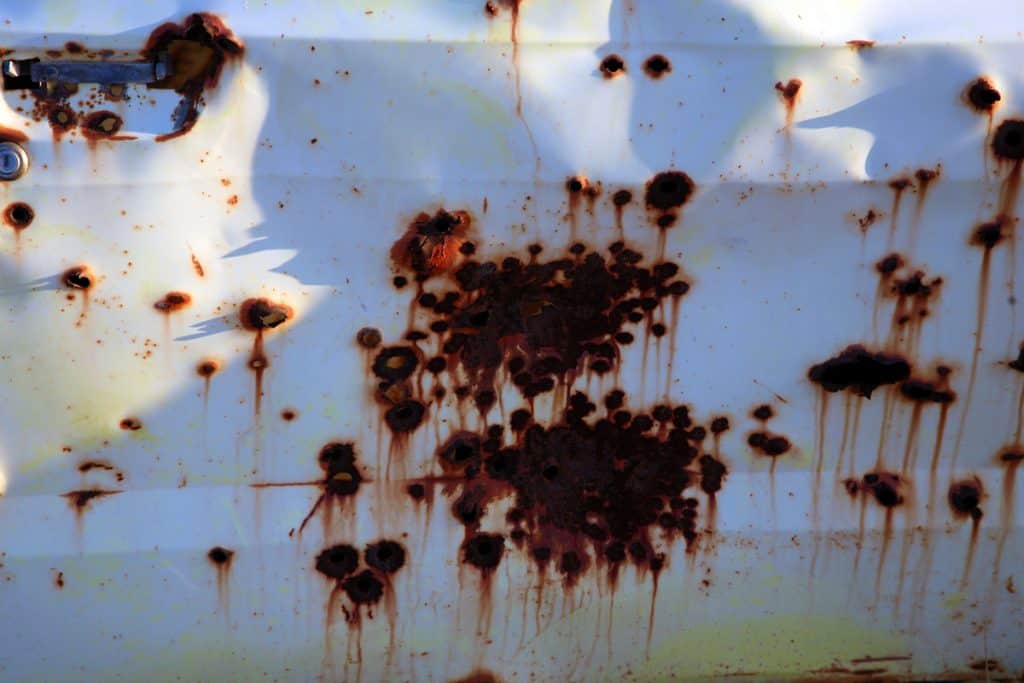 Do White Cars Rust Faster?
Do White Cars Rust Faster?
There’s a common misconception that white cars are more susceptible to rust compared to other car colors. Even if this point were valid, which it’s not, the reasoning behind it would probably be understandable based on scientific standards.
It’s a known fact that white deflects light or heat, while black absorbs it. Therefore, the darker color stands a better chance at keeping the car dry while the brighter shade accommodates moisture.
Some people are quick to conclude this, not knowing that rust is noticeable on white, more than any other color. It may take you a while to notice the rust on cars with darker shades.
What you need to know is that all cars are made from the same material but coated with different paint colors. All vehicles that leave the factory come equipped with similar levels of rust protection, as well as paint quality.
Which Cars Have Best Rust Protection?
There are cars out there that are naturally prone to rust, regardless of the efforts you take to prevent it. Likewise, some are designed to keep you from spending extra on rust repairs. Our inquiry into the market directed us to these supreme vehicles with incomparable rust protection qualities:
Hyundai Accent
If you own this car, you won’t have to worry about rust for a very long time. The interior and exterior parts are well-structured to resist corrosion and keep the vehicle running for longer. The Accent’s 1.6-liter engine is still in production and has been since 1994. You’ll also find the strong body to be quite dependable.
Kia Forte
Otherwise known as the K3, the Forte has been around since 2008. Performance-wise, the engine pumps out a mere 173hp. Despite this, the Kia Forte doesn’t disappoint when it comes to rust protection. Its corrosion-resistant exterior was structured using the best quality materials.
Lexus LS
Asian manufacturers are the best as far as producing rust-resistant vehicles goes. One of them is the luxurious Lexus LS. This full-size vehicle is actually the brand’s flagship model. The car comes fitted with a V6 engine with no option of a V8. The Lexus LS (Luxury Sedan) provides exquisite comfortability with zero chances of corrosion.
Other vehicles include the Volvo S60, Volkswagen Golf, Mercedes-Benz C-Class, and the Audi A3.
How Do I Fix Rust On A Car?
Whenever you notice rust spots on your car, act fast and get rid of it at your earliest convenience. Spots can spread very fast, leaving your vehicle looking like a rust bucket. But you don’t want that for your beautiful ride, do you? In that case, here are the seven straightforward steps to clear any rust from the surface of your ride:
Step 1: Mask/cover the area around the rust. You can do this using a fresh roll of poly sheeting. Wrap it approximately two feet away from the rusted area.
Click here to view this product on Amazon.
Step 2: Scrub through the rust spot(s) using 40-grit sandpaper all the way down to the bare metal. Once you get to the metal, scrub the surrounding paint gently for a level finish. This process is known as feathering.
Click here to view this product on Amazon.
Step 3: Clean the area using gentle dishwashing detergent and rinse with clean water. Get rid of any lint or dust remains.
Click here to view this product on Amazon.
Step 4: Spray at least three coats of self-etching epoxy primer and sand the repair area using 1000-grit sandpaper. Rinse it off with a cloth, and apply three coats of lacquer filler primer then allow at least one hour to dry.
Click here to view this product on Amazon.
Click here to view this product on Amazon.
Step 5: Sand the dried area using a damp 600-grit sandpaper. Then, sand one last time with wet 1,000-grit sandpaper.
Click here to view this product on Amazon.
Step 6: Spray the colored base coat while holding the can approximately 12-inches away from the repaired area. Spray thrice in intervals of ten minutes. Of course, the base color spray should match your car’s accent color.
Step 7: Proceed to spray several layers of clear coat and let it stay for 48-hours or more. Be careful not to spray too much of it and risk the appearance of your paint job.
How Much Is Rust Repair On A Car?
If you’re not one to get your hands dirty for one reason or another, you can easily pay someone to get the rust off your car. Here’s where it gets a little tricky, though. Repairs are quite unpredictable and vary from one mechanic to the next.
Some factors to be considered include your car’s model, the magnitude of the rust, and the position of the rust. The professional will determine the kind of work that the vehicle needs, and will categorize it into three: minor, intermediate, and major rust repairs.
1. 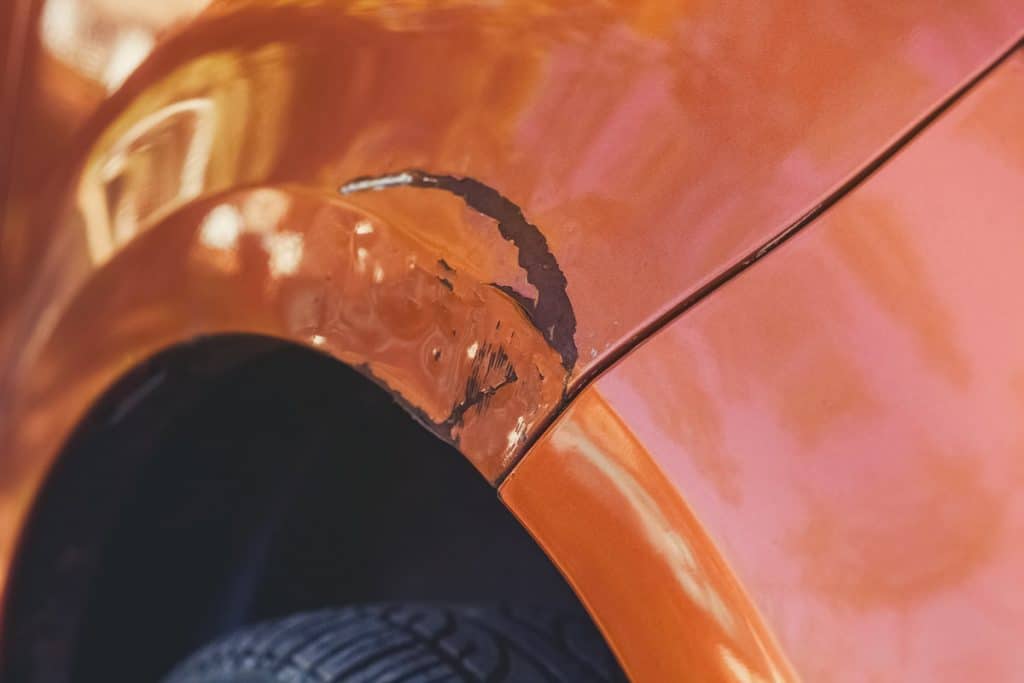 Minor Rust Repair
Minor Rust Repair
Small rust patches are generally affordable to repair. ‘Minor’ spots, in this case, refer to rust with a diameter of no more than two diameters. You can purchase the required equipment for this kind of job for approximately $30 bucks. Technicians can charge an extra $20 to $30 worth of labor costs to get rid of the rust spot.
2. Intermediate Rust Repair
Bigger rust patches need a little extra work for a quality finish. Rust sometimes occurs in pastry-like layers that can be quite a bother to handle on your own. In this case, the damage can go as far as several layers down, but won’t extend to the bottom of the surface.
Materials for this kind of job can cost between $50 and $75. Labor costs typically cost an added $60 to $100.
3. Major Rust Repairs
Experts have identified that the most significant forms of rust patches have a diameter of more than 12-inches. They’re classified as ‘major’ because they’re also very deep and can extend past the surface of a car’s metal. This kind of rust should be handled by a professional who does welding as well.
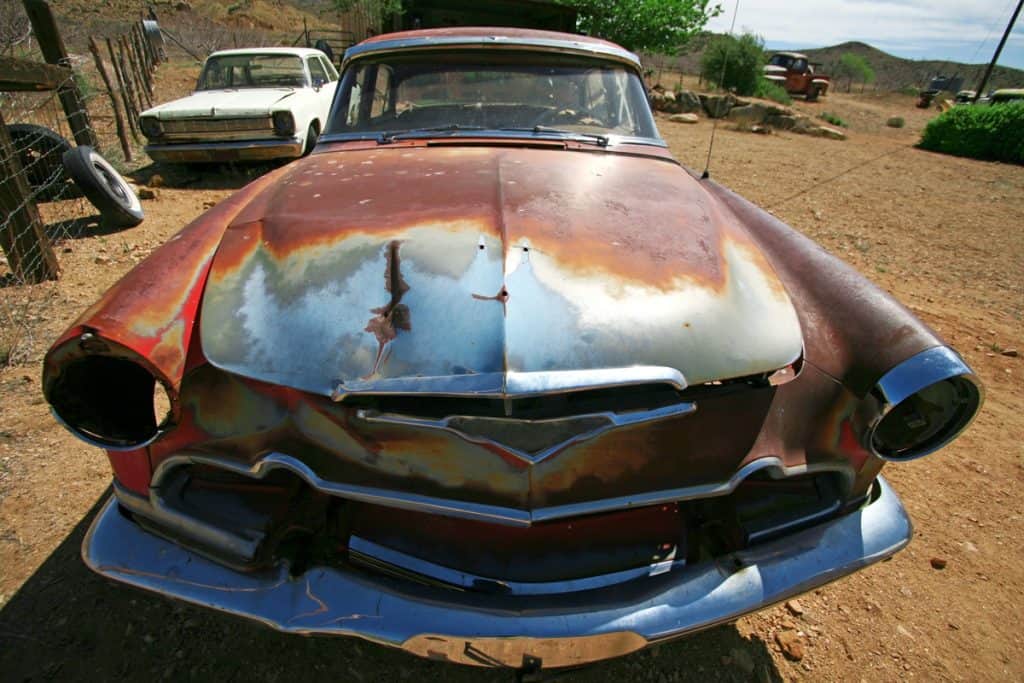
If you want to repair just a section of a badly damaged spot on your car, you’ll need new metal panels that cost roughly $60 for one. If it’s the entire body that needs replacement, then you need anywhere between $200 and $2,000. On top of that, you need an additional $45 to $250 to cater for welding costs.
To get your rust fixed, don’t look any further than vehicle restoration businesses, smash repairers, and panel shops. If they charge you insane amounts for intensely severe repairs, your last and most economical option is to replace the vehicle.
How Long Does Rust Repair Last?
This should be your number one question, especially if you paid big bucks for the big fix. Almost every professional technician will be reluctant to give you an exact duration – and for good reason too.
To start with, there’s never really a sure way to determine whether the rust is gone completely. Even the most professional efforts may not be enough to tame the three notorious causes of rust. If you drive along humid conditions, there’s a higher chance of rust popping up at an even faster rate.
The replacement metal may sometimes contain microscopic particles from the previous one that reignites the entire process. It’s for this reason that no single repair can completely ‘cure’ your vehicle from rusting. It’s also why most auto body shops rarely offer a warranty on their repair services.
Repairs basically treat the rusted areas with rust inhibitors and slow the process down to almost undetectable levels. Severe rusting is often called “cancer” because it tends to multiply from a single cell and start a fresh wave of rust. If your car hasn’t rusted yet, keep reading to find out how you can keep it safe from corrosion.
How Do I Stop My Car From Rusting?
Your car is among the most valuable items that anyone can ever own. Of course, at some point, it’s bound to deteriorate and lose its outward beauty. However, with proper care and maintenance, you can keep any form of rusting at bay for the longest time. Here are some tips to prevent your car from rusting:
Wash Your Car Twice A Week
If you live in areas with humid weather, you should never compromise on your car’s cleanliness. Furthermore, washing your car once a week with regular household soap won’t help your vehicle in any way. Go the extra mile and wash it twice a week using Meguiar’s Car Wash soap and running water at least twice a week.
Click here to view this product on Amazon.
Doing so will prevent the growth of algae on the car paint, thereby leaving very little room for rust.
Coat Rust-Prone Areas With WD-40
WD-40 is one of the best products for rust prevention. Not only does it keep away rust, but it also keeps your car safe by keeping the surface dry regardless of the weather conditions. Spray WD-40 on the most vulnerable spots, such as the frame rails, wheel wells, suspension, exhaust, and doors (both inside and out).
Click here to view this product on Amazon.
Protect Your Car From The Elements
Here’s where you need to be particularly responsible for your car’s safety. Though you won’t always be there to prevent your vehicle from water, oxygen, or salt, the best you can do is try. Here are useful preventive measures you can follow:
- Avoid parking your car in open areas. Bird droppings contain various chemicals that ruin the paint job and leave your vehicle vulnerable to rust.
- Don’t park your car right next to other cars in the parking lot.
- Don’t park your car over wet or damp areas.
- Avoid placing bulky goods on the trunk or hood.
- Steer clear from incomplete roads with potholes. Small stones may get stuck in the wheel wells.
Apply A Quality Rust Arrestor
If there’s a small part of your car that has rusted already, what you want to do is prevent it from spreading further. Loctite is among the most preferred rust arrestors that prevent the development of fresh rust. Dip a small brush in the arrestor and apply a thin layer on the small rusted patch.
Click here to view this product on Amazon.
After four hours, the mild rust patch will turn to a harmless, neutral black surface. You can then repaint that patch based on your car color. If you need to repaint the whole car, read, "How Much Does it Cost to Paint a Car?" to know how much you’ll spend on the entire paintwork.
Now you know how to prevent rust on your car, but if it happens, you will also be well-equipped to stop the spread of rust early to protect your car's exterior.









